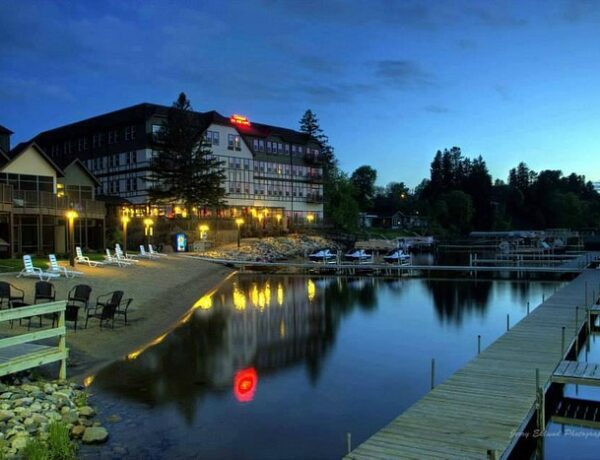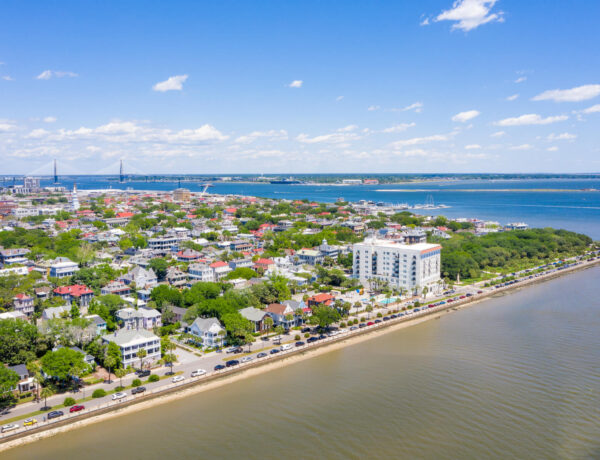New York City is well known for its skyscrapers and architecture, and with good reason. In the last 300 years, this city has evolved from a simple Dutch settlement to an internationally recognized metropolis by inventing, adapting, and fully expressing different architectural styles throughout the decades. Here are some of the New York buildings that highlight that tell the architectural evolution of the Big Apple.
1700’s – 1840’s
Federal Hall – 1833
This Greek Revival building was built to replace the old City Hall on the same site that served as the nation’s first capitol building. It was here where George Washington was inaugurated as President. The Greek temple front symbolizes the young nation’s democratic ideals. Today it is a free museum and National Memorial.

Trinity Church – 1846
Not all New York buildings are skyscrapers. This Gothic Revival church was burned during the Revolutionary War. In the churchyard, in addition to Alexander Hamilton’s grave, there is a memorial to the unknown martyrs of the revolution buried on the grounds. The brown stone material was popular during the time, in addition to the ornaments and stained glass found in the facades.
1850’s – 1880’s
St. Patrick Cathedral – 1851
St. Patrick’s Cathedral is the largest decorated Neo-Gothic-style Catholic cathedral in North America. Its spires reach a height of 328 feet. Even though it was rebuilt after the 1866 fire, it is still the oldest Catholic Church in New York City.

Museum of Metropolitan Art – 1880
The world famous MET Museum is housed in this Neoclassical building situated in Central Park and Fifth Avenue. The design shows strength, culture, and wisdom; symbolizing the art sheltered inside. While it looks like a single design structure, the building is made by a series of expansions made throughout the decades up until 1991.

1890’s – 1900’s
St. John the Divine – 1892
The cathedral began construction in 1892 and throughout the construction it underwent massive stylistic changes from Byzantine to Gothic. Its construction was interrupted by the two world wars, and still to this day it is not finished.
Flatiron Building – 1902
Considered one of the first skyscrapers in the city and one of the most photographed New York buildings, this eye-catching building combined elements of French and Italian Renaissance architecture. The building’s triangular plan was a clever response to the shape produced by the intersection of Broadway and Fifth Avenue.
Grand Central Terminal – 1903
Modeled on a merge between a Roman triumphal arch and a roman bath, the Beaux Arts façade and interior concourse present a strong symbol that mixes antiquity with industrialization. It symbolizes the triumph of the railroad and it was envisioned as a gateway to the city.

1910’s – 1920’s
Woolworth Building – 1911
This once tallest building in the world is one of the masterpieces of early skyscraper design. The ornate terracotta cladding and design evoke the guildhall architecture of France and Belgium. The building has the title of “Cathedral of Commerce”.

New York Public Library – 1911
With a combination of Classical and Beaux Art design, the main branch of the New York Public Library was the largest marble structure in the United States during the early 20th century. The building was declared a National Historic Landmark in 1965. Even though its interior design is not as extravagant compared to other buildings of the era, it is still considered an architectural delight.

Chrysler Building – 1928
Even though it lived as the tallest building in the world only for a few months, the Chrysler building’s Art Deco design placed it in a monumental spot in New York’s skyline. Referencing the automobile, this is one of the first large buildings to use metal extensively on the exterior.

1930’s – 1940’s
Empire State Building – 1931
This art deco iconic building was the tallest building in the world from 1931 till 1975, when the World Trade Center took the title. The Empire State Building is the first building to cross the 100 floors mark (102 floors) and it broke the record of construction time. It took only one year and forty-five days to build, considering it was built during the Great Depression. It’s ever-changing night lighting scheme makes it a favorite of the New York buildings.

Rockefeller Center – 1932
This complex of 19 buildings is one of the best examples of urban planning in New York. Here you will find Radio City Music Hall, the famous Rockefeller skating rink, and the Top of The Rock observation deck. In my opinion the best place to see New York City from above.

United Nations – 1947
This modern complex helped revitalize New York City at the end of WWII. It’s 38 stories tower was the first mayor International Style design to be constructed in New York City. The design was based on Le Corbusier’s plans; he is one of the most well known modern architects.
1950’s – 1960’s
Seagram Building – 1957
Ludwig Mies van der Rohe designed this often-overlooked tower. This is one of the finest examples of the functionalist aesthetic that was made popular during the International style era. This is a masterpiece of corporate modernism and modular design.
Salomon R. Guggenheim Museum – 1959
The Guggenheim is Frank Lloyd Wright’s (one of the best architects of all times) last major work. Unlike conventional museums, the main gallery is a spiraling ramp that connects all six floors seamlessly. Its white curled ribbon appearance is in sharp contrast to the more typically boxy Manhattan buildings that surround it.
TWA Terminal – 1962
The TWA Terminal at JFK Airport, designed by Eero Saarinen, is a futurist design terminal full of open spaces and wide glass windows that opened onto parked TWA jets. Its design resembles that of a bird taking flight. Today it is owned by Jet Blue Airways.

Lincoln Center – 1968
The Lincoln Center for the Performing Arts is comprised of a unity of several travertine buildings that surround an open, user-friendly plaza. The Metropolitan Opera House is the focal point of this complex.

1970’s – 1980’s
World Financial Center – 1988
The World Financial Center is a group of four Post-Modernist towers built on the Hudson River landfill next to the World Trade Center site. While they might not be particularly iconic in terms of architecture, they hold an important place in New York’s economy and history. Portions of the complex, especially the Winter Garden, were severely damaged in the September 11, 2001 terrorist attacks.
1990’s – Present.
Hearst Tower – 1928 and 2004
This interesting building combines an Art Moderne base with a Late Modern tower. The diamond shape pattern on the tower’s façade is derived from the creative structural frame designed by Sir Norman Foster. This is the first green building to be completed in New York City.
Bank of America Tower – 2008
– This contemporary design incorporates a playful design with its tilted walls that deform the shape of the tower as it rises. It is currently New York’s second tallest building, only after the Empire State Building, and it is one of the most highly efficient and ecologically friendly buildings in the world.

Photo Credits: Noeluap, blitzmaerker, Geff Rossi, su-lin, karma17, Lisa Andres, pvsbond, Marek Bakajsa, melanzane1013, angela n., Daquella Manera, asterix611, lukemontague, Tom Ravenscroft, Evelyn Proimos, Telstar Logistics, inilovely, Nicolas Grevet, .Martin., Bosc d’Anjou





1 Comment
Photo Essay: 16 of the Best City & Urban Beaches - Sharing Travel Experience
September 5, 2023 at 2:43 am[…] York City, despite the towering skyscrapers and miles of paved avenues, offers a lot of options for beach-seekers. I always advise heading for […]